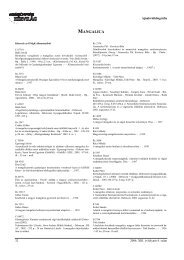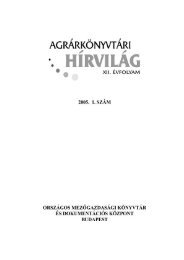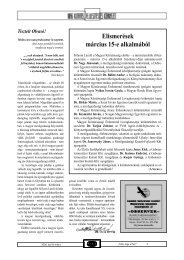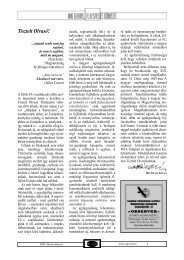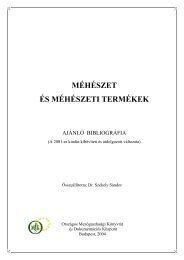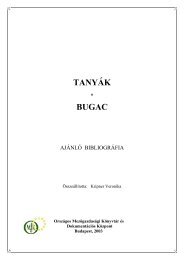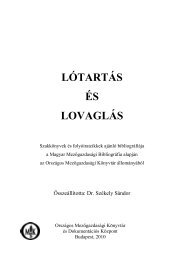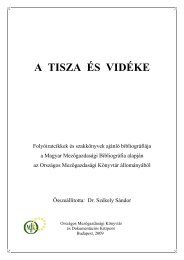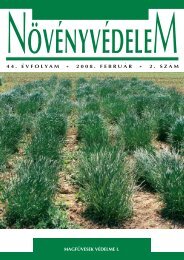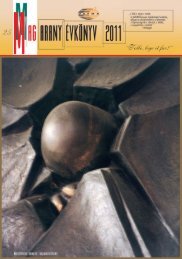hUNGARiAN AGRicUltURAl RESEARch
hUNGARiAN AGRicUltURAl RESEARch
hUNGARiAN AGRicUltURAl RESEARch
You also want an ePaper? Increase the reach of your titles
YUMPU automatically turns print PDFs into web optimized ePapers that Google loves.
Celosia plumosa New Look (bikavér) Celosia plumosa Aranybika Celosia plumosa Fônix<br />
stem variety was unsuitable for this<br />
purpose.<br />
The two dwarf varieties of<br />
Cosmos sulphureus are popular all<br />
over the world primarily because<br />
they produce a lot of branches.<br />
Cosmic Orange and Cosmic<br />
Yellow were awarded by both<br />
Fleuroselect and A.A.S.<br />
The first tetraploid variety,<br />
Carioca, was developed from this<br />
species, which is regarded as<br />
extraordinarily innovation worldwide.<br />
It is 80 cm high and as a<br />
consequence of chromosome<br />
doubling has more durable flowers,<br />
stronger stems and larger blooms<br />
than the diploid varieties previously<br />
widespread in the USA. It<br />
was granted with Fleuroselect<br />
Award in 2006.<br />
The varieties of Celosia are also<br />
regarded as Hungarian specialities.<br />
The large number of branches<br />
makes it perfect for flower beds,<br />
contrary to the previously wellliked<br />
Japanese varieties which –<br />
due to their small size – are more<br />
suitable for being planted in pots or<br />
tubs. Several of the Celosia<br />
varieties bred by in our institute<br />
were awarded by Fleuroselect and<br />
A.A.S. All are tolerant to drought<br />
and bloom for a long period<br />
producing abundant flowers.<br />
A hollyhock variety group<br />
generated by crossing the Althaea<br />
officinalis, a wild species in<br />
Hungary, the Alcea rosea varieties<br />
developed previously can be<br />
considered as the most unique<br />
novelty. The varieties of the group<br />
are superior in several traits to the<br />
varieties known up to now, and<br />
they are the only varieties that are<br />
resistant to hollyhock rust<br />
(Puccinia malvacearum). They are<br />
completely winter-hardy. These<br />
varieties are sterile, therefore,<br />
they do not produce seeds,<br />
resulting in continuous flowering.<br />
Previously, we propagated them<br />
via cuttings, but now the more<br />
effective method of micropropagation<br />
is used.<br />
This new variety group, being<br />
an intergeneric hybrid between<br />
Alcea and Althaea, is of high<br />
importance not only in terms of use<br />
but from scientific aspects as well.<br />
The development of several new<br />
traits is attributable to the application<br />
of the method of intergeneric<br />
hybridisation.<br />
We intend to use this breeding<br />
technique more often in the future,<br />
which is greatly assisted by the<br />
micropropagation procedure<br />
without which such crossings did<br />
not seem to be successful.<br />
These new hollyhock varieties<br />
highly tolerant to extreme climatic<br />
conditions encourage the use of<br />
this method for the breeding of<br />
other species as well.<br />
Alcea x Althea Háros<br />
Alcea x Althea Háros (purple in background)<br />
6 Hungarian Agricultural Research 2009/3–4



